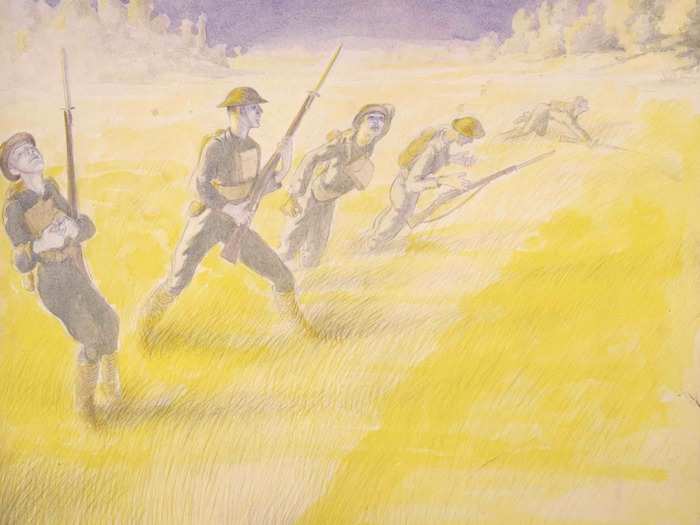

Source: "Grand Illusions"


Source: "Grand Illusions"

Source: "Grand Illusions"

Source: "Grand Illusions"

Source: "Grand Illusions"

Source: "Grand Illusions"

Source: "Grand Illusions"
![Wilson's battlefield works, notes the catalogue, are "harrowing and sometimes hallucinatory watercolors that call attention to the loneliness and despair of soldiers on the front lines ... [that] depicted his former adversaries, German foot soldiers, as fellow victims of the collective insanity of war." Wilson's battlefield works, notes the catalogue, are "harrowing and sometimes hallucinatory watercolors that call attention to the loneliness and despair of soldiers on the front lines ... [that] depicted his former adversaries, German foot soldiers, as fellow victims of the collective insanity of war."](/thumb/msid-60085318,width-700,height-525/60085318.jpg)
Source: "World War I and American Art"
 Luxury “floating” beach unveiled in France, termed an “ecological aberration”
Luxury “floating” beach unveiled in France, termed an “ecological aberration”
 Scientists think they’ve spotted 60 potential alien power plants in the Milky Way!
Scientists think they’ve spotted 60 potential alien power plants in the Milky Way!
 Bread, butter, milk-based health drinks, cooking oils classified as ultra-processed food, ICMR advises restriction
Bread, butter, milk-based health drinks, cooking oils classified as ultra-processed food, ICMR advises restriction

Copyright © 2024. Times Internet Limited. All rights reserved.For reprint rights. Times Syndication Service.